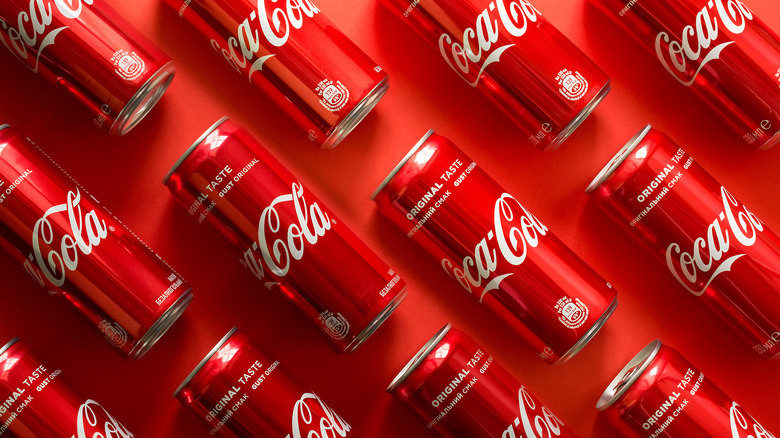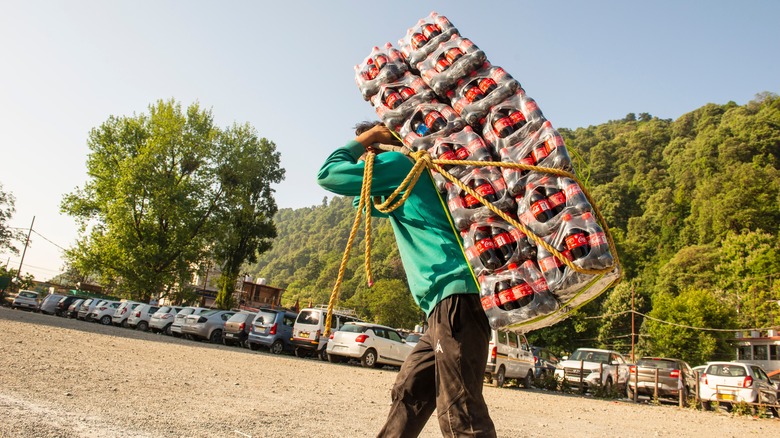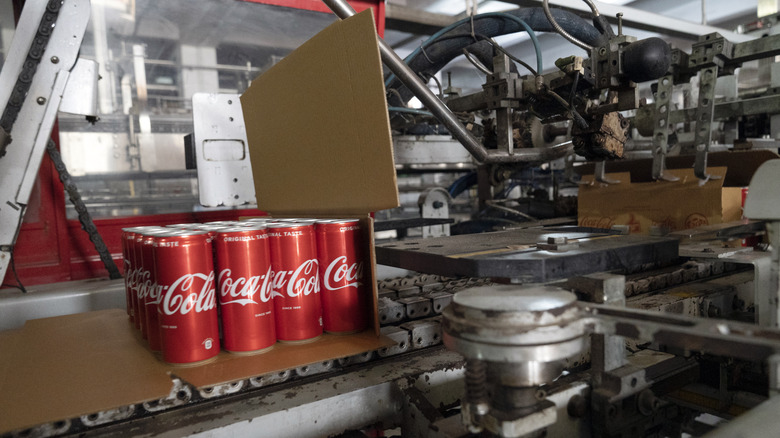Why Coca Cola Was Once Banned In India
Even those who didn't make it to the final episode of "Mad Men" will recognize the jingle that accompanies Coca-Cola's seminal 1971 commercial, which portrayed the amber-hued soda as a symbol of global unity. "I'd like to teach the world to sing in perfect harmony," a diverse crowd of young people sing in unison, adding "I'd like to buy the world a Coke and keep it company."
According to a 1971 The New York Times article, the brand kicked off the decade with "record sales and earnings" nationwide. This was years after Coke's reputation was briefly tarnished at the turn of the century upon the discovery that the original recipe contained traces of cocaine (per a statement shared with The New York Times).
Despite the success that followed Coke's free-lovin' message, however, the 1970s also brought a wave of adversity between the soda company and the Indian Parliament on the heels of Indira Gandhi's rather hectic reign as Prime Minster.
A state of emergency
In 1973, former Indian Prime Minister Indira Gandhi passed something called the Foreign Exchange Regulation Act (FERA). In order for India to conserve its foreign exchange resources, which were low, FERA "regulated certain dealings in foreign exchange, imposed restrictions on certain kinds of payments and monitored the transactions impinging the foreign exchange and the import and export of currency," per 99acres. According to Atlas Obscura, FERA also laid the groundwork for India's Coca-Cola ban four years later.
In 1977, India was experiencing a massive shortage of drinking water. Nevertheless, Coca-Cola was widely available in nearly every corner of the country, from major cities to small villages. Atlas Obscura cites a 1992 New York Times article in which George Fernandes, a former Indian trade unionist, said, "When I chucked out Coca-Cola in 1977, I made the point that 90 percent of India's villages did not have safe drinking water, whereas Coke had reached every village." With backing from FERA, Fernandes gave Coke the choice of packing its bottles or giving up its secret recipe. The company left the country, along with over 50 other companies faced with similar requisitions.
Coke's return to India
In 1993, less than two decades after Coca-Cola got the boot, it reentered the Indian market amid new "liberalization policies" that modified FERA to allow multinational companies like Coke to regain larger shares of their equity in the country. "The modification made it so that companies which exceeded foreign equity by 40% of the total were to be treated on par with Indian companies," explains Groovy Ganges.
Per Atlas Obscura, Coke marked its return by swiftly buying up Parle, the brand that bottled the Indian cola Thums Up and citrusy Limca, which had been holding down the fort in Indian soda aisles during Coke's absence. Coke's buy-up wiped out smaller Indian soda brands like Citra, Gold Spot, and RimZim, but Thums Up and Limca are still popular. Atlas Obscura credits the pair's fortitude to "specific regional tastes," explaining that Thums Up's "pungent tingle" pairs well with spicy food, while Limca evokes nationally beloved nimbu paani, a tart and refreshing lime drink.


